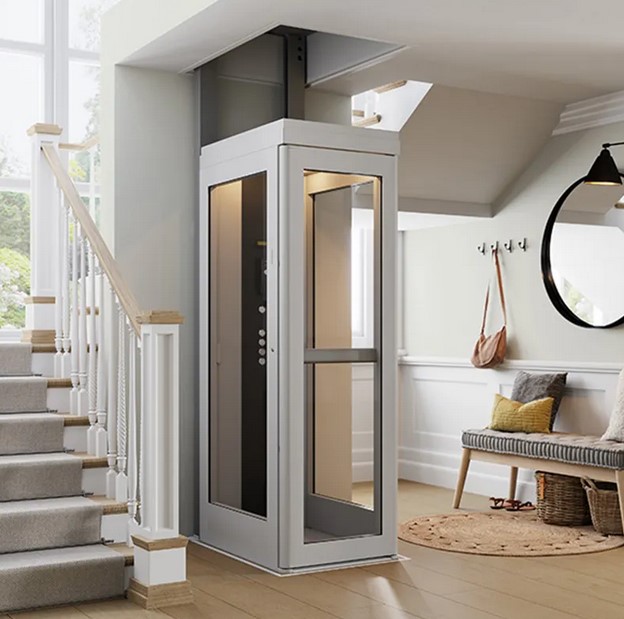We Maintain Lifts to the Highest Standards: Reliable Service for All Lift Kind
We Maintain Lifts to the Highest Standards: Reliable Service for All Lift Kind
Blog Article
Looking Into the Globe of Lifts: Common Concerns Dealt With by Various Lift Devices
As we browse with the vertical transportation systems of contemporary structures, elevators attract attention as an indispensable part of our day-to-days live. However, behind their smooth operation exists a world of intricate devices that can often experience challenges. From hydraulic elevators to traction systems and machine-room-less layouts, each lift type comes with its collection of common problems. Understanding these obstacles is important for ensuring the smooth functioning of these vital systems. Allow's explore the complexities that underlie the procedure of elevators and the possible issues that can develop, clarifying the complex web of lift systems.
Hydraulic Elevators
Hydraulic elevators, usually chosen for low-rise structures, make use of fluid stress to control the motion of the lift car (lift repair companies). This system includes a hydraulic pump pressing oil right into a cylinder, triggering the elevator to relocate the preferred instructions. While hydraulic lifts are known for their peaceful and smooth operation, they do feature their very own set of common problems
One widespread issue with hydraulic lifts is oil leakage. Furthermore, problems with the control system, such as defective valves or a malfunctioning pump, can cause disruptions in the elevator's activity.
Normal upkeep and punctual repair services are vital to make certain the smooth performance of hydraulic lifts. By attending to these common issues proactively, building proprietors can lessen downtime and make sure the security and efficiency of their vertical transport system.
Traction Elevators
When considering upright transportation systems in buildings, another usual type other than hydraulic lifts is the grip elevator. Traction elevators operate making use of a system of ropes and weights that relocate the lift automobile by grasping onto the hoist ropes. This mechanism permits smoother and quicker vertical transport compared to hydraulic systems.
Among the typical issues encountered by grip elevators is rope wear. The consistent motion of the ropes within the grip system can cause deterioration gradually, potentially creating the elevator to breakdown or end up being unsafe for usage. Regular examinations and maintenance of the ropes are necessary to make sure the elevator's appropriate functioning and security.
Another problem that traction elevators might experience is connected to the control system. Issues with the control system can bring about problems such as unpredictable motion, hold-ups in response times, and even full shutdowns. Routine testing and maintenance of the control system are important to avoid such problems and ensure the elevator's reliability.
Machine-Room-Less (MRL) Elevators

Among the crucial parts of MRL elevators is the compact gearless traction device that is installed within the hoistway. This machine successfully drives the elevator automobile without the need for cumbersome devices located in typical traction elevators. In addition, MRL elevators typically make use of a counterweight system to stabilize the cars and truck, further boosting their energy performance.
Despite their benefits, MRL elevators may encounter challenges associated to repair and maintenance as a result of the restricted room for equipment setup. Availability for servicing components within the shaft can be limited, needing specialized training for technicians. Appropriate upkeep timetables and regular assessments are crucial to make certain disabled platform lifts prices uk the continued smooth london lift company operation of MRL lifts.
Overloading and Weight Restriction Issues
Straining and weight restriction concerns are essential problems in lift procedures. Elevator manufacturers design lifts with specific weight abilities to make certain guest safety and security and tools durability.
When elevators are strained, it places extreme stress on the motor, cables, and various other parts, possibly triggering malfunctions or malfunctions. Safety devices such as sensing units and overload sensors are in area to stop lifts from moving if they find excess weight. Furthermore, exceeding weight limitations can result in increased power consumption and damage on the elevator system.
To mitigate straining problems, building supervisors need to prominently present weight limitations in elevators and inform residents on the relevance of adhering to these restrictions - lift repair companies. Routine maintenance checks by certified service technicians can also aid guarantee that lifts are operating within risk-free weight parameters. By attending to overloading and weight limit issues proactively, structure proprietors can improve lift safety and effectiveness
Electric System Failures
Going beyond weight limits in lifts can not only bring about mechanical issues however additionally potentially add to electric system failures within the lift facilities. Electric system failures are a critical issue in lift operation, as they can cause unforeseen closures, malfunctions, or also safety dangers. One usual electrical problem is the overheating of components because of too much existing lift repair near me circulation triggered by overwhelming the lift past its ability. This can lead to damage to the control, electrical wiring, or motor systems, causing pricey repairs and downtime.
Routine maintenance and examinations are vital to identify and resolve prospective electrical problems quickly, guaranteeing the efficient and risk-free procedure of elevator systems. By adhering to weight restrictions and performing regular electrical system checks, building proprietors can alleviate the risk of electric failures in lifts.
Final Thought

Hydraulic lifts, commonly chosen for low-rise buildings, use fluid pressure to regulate the motion of the elevator auto.When thinking about vertical transport systems in structures, another usual type apart from hydraulic elevators is the grip elevator. Grip elevators run using a system of ropes and weights that relocate the elevator auto by grasping onto the hoist ropes. Unlike typical elevators that call for a separate equipment space to house the tools, MRL elevators incorporate most of the parts within the shaft, getting rid of the need for a specialized machine space.In verdict, elevators encounter common problems such as hydraulic breakdowns, traction system failures, and electrical system troubles.
Report this page